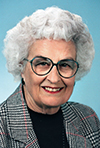Rohse: Handwashing was once a hard sell
How pleased Dr. Ignaz Philipp Semmelweis would be to note that handwashing is being stressed today as one measure to help control coronavirus. He was among the first to focus on the importance of handwashing, thereby saving many lives.
Since we were kids we’ve heard the command, “Wash your hands! Wash your hands!” And we learned that lesson well.
But washing hands has not always been a common practice and that has meant tragedy — especially with regard to childbirth.
In the mid-19th century, about five of every 1000 women died in deliveries performed by midwives at home. In the best maternity hospitals in Europe and the U.S., the maternal death rate was considerably greater — 10 to 20 times.
Semmelweis (1818-1865) was greatly concerned with that statistic. Puerperal fever is a bacterial infection that can occur in the uterine tract of women after giving birth. It often causes death.
The son of Jewish immigrants, Semmelweis studied at the University of Vienna in Austria. He then studied law, at his father’s suggestion. But in 1838, after attending an anatomy class with a medical friend, he transferred to the University of Pest at Budapest, Hungary, and began studying medicine in 1840.
He returned to Vienna General Hospital, where he was appointed to the maternity ward and obtained his doctorate in medicine from the university. In 1844, he obtained his master’s degree in midwifery and took training in surgical procedures.
That hospital had two obstetric clinics Semmelweis noticed one clinic had considerably more fatalities than the other. Since puerperal fever was contagious, Dr. Semmelweis reasoned unhygienic practices among physicians were perhaps the cause. After much research and observation, he proved his point: When physicians washed their hands with a chloride solution before they attended to patients, fever rarely resulted.
But the doctor soon learned that change was difficult.
The practice was widely criticized, although research had shown the use of the chloride solution had slowed the spread of puerperal fever and set a precedent for many scientists.
Semmelweis ordered the two clinics to change their medical procedures to determine if the fever was the result of a particular procedure. It was determined the particular procedure did not affect mortality rates, although it caused ill will. The doctor of the first clinic resented Semmelweis’ suggestions.
After more statistical analysis, the doctor introduced vigorous handwashing rules in the maternity ward. The death rate dropped drastically. Some now dubbed Dr. Semmelweis “the savior of mankind.”
It is said it took until the late 1800s for surgeons to scrub up before surgery or even wash their hands between patients, thereby transferring infections.
And here is an alarming story from the past: medical students routinely moved from dissecting corpses to examining new mothers without washing hands — which, of course, might result in death.
Semmelweis said the chloride would destroy any resulting bacteria from the cadaverous material and this reduced the death rate of puerperal fever. The doctor then required all doctors to wash their hands between procedures. The puerperal death rate dropped to approximately 2% — and continued to fall.
But Semmelweis was still a controversial figure. After his success, another doctor claimed the decrease was attributable to a new ventilator that had been added to the hospital about that time. The findings of Dr. Semmelweis were published in a medical journal by a friend but were opposed at that time.
Since dissecting became more important in medical practice in the 1800s, mortality rate increased.
When Semmelweis was implementing use of chloride solutions, he applied for an extension of his work. It was not granted despite the doctor being the choice of most of the medical family.
In March 1847, the doctor was so overwhelmed by the deaths from puerperal fever he took a leave of absence to go to Vienna. Later that month, he returned when a professor of forensic medicine died after a student accidentally pricked him with a knife used in an autopsy
After studying the autopsy, Semmelweis found the symptoms of the professor’s death resembled those of maternity patients who died of puerperal fever.
Because of the similarity, the doctor deduced the medical student, who was in the first obstetrics clinic, in which cadavers were dissected at the morgue, realized the student likely was transferring cadaverous materials from the morgue to the maternity patients.
At the time of the mid-1800s, numerous doctors argued that disease resulted from an imbalance among four humors which they believed existed in all bodies and that each disease was unique since each person was unique.
Doctors believed a healthy person has a perfect balance of black bile, yellow bile, phlegm and blood. And the practices Semmelweis proposed contradicted those of earlier beliefs.
Others wondered if the theories Semmelweis advanced were being dismissed because he was of Jewish and Hungarian origin. The doctor was not only controversial, but said to be difficult, and when he lost his job, he returned to Hungary. That hospital had a high rate of puerperal fever and he advocated chlorine washing procedures. Infection was reduced. He became head of obstetrics at the hospital.
The doctor married the daughter of a wealthy businessman and they had five children. He continued to write papers on puerperal fever and published a book on the topic.
But his mental health worsened. He was plagued with severe depression.
By 1865, his unusual behavior affected his professional life. He spent much time away from his family. That year his wife and some of his colleagues committed him to a Viennese asylum.
While in the asylum, he was beaten so severely by attendants that he died of his injuries.
He did so much for his fellow men. He was a zealot in his efforts to reduce deaths from infection. And the prescription he most often suggested was, “Wash your hands.”
Elaine Rohse can be reached at rohse5257@comcast.net.












Comments